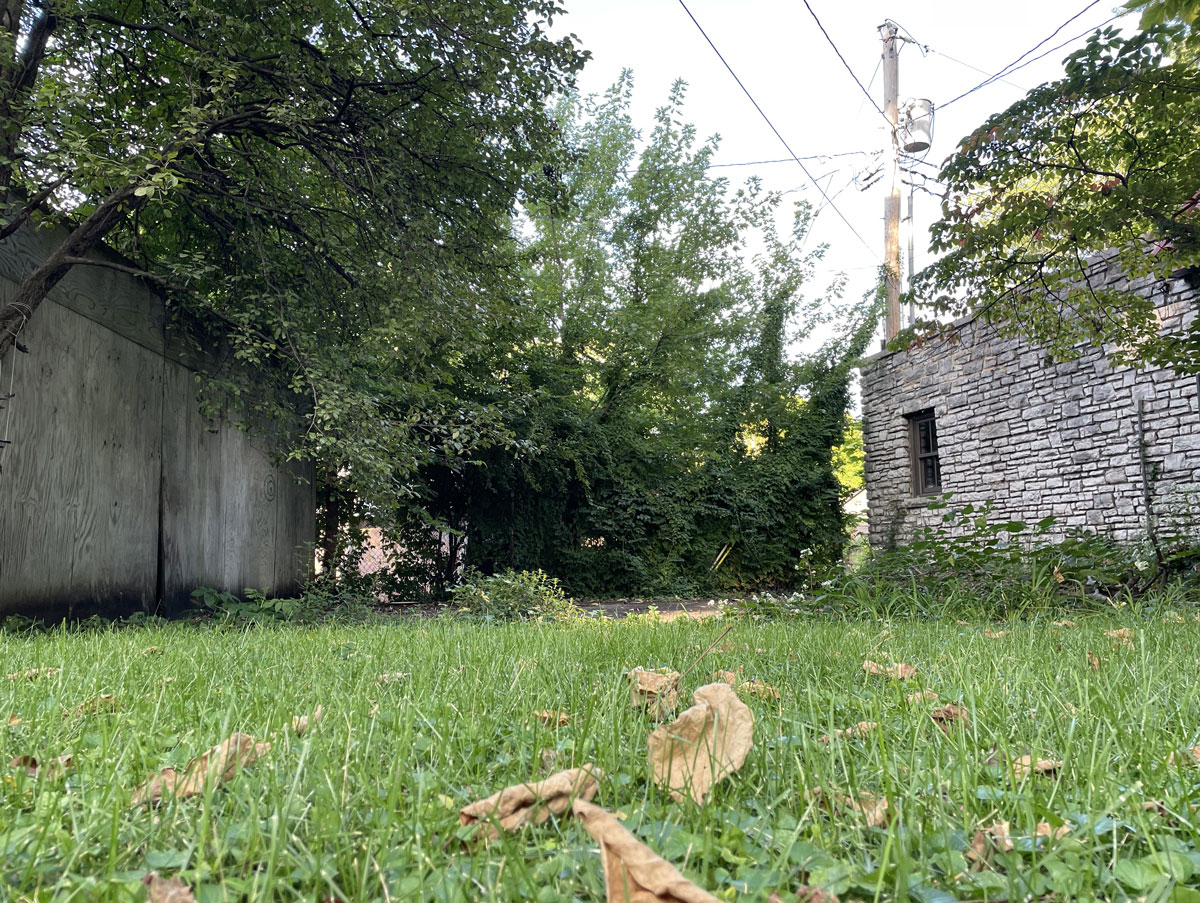Kathleen Finneran
North County
St. Louis, Missouri
By Marina Henke
In the middle of winter a red cardinal lands on a birdbath. It sits, jumps onto a kitchen windowsill and flies away. A suburban backyard just north of St. Louis, Missouri. Such is the opening scene, and the near-constant backdrop, of Kathleen Finneran’s piercing 2000 family memoir, The Tender Land.
In a book that traverses the faith and formation of a family of six and ultimately centers around the death of her youngest brother, Sean, Finneran takes us through the winding suburban streets and cracked brick houses of her North County suburb. Occasionally we depart the space: to her late brother’s bike rides along the Alton River Road, her days in claustrophobic Catholic schools and under the dull fluorescents of strip mall stores. But the place that she most frequently returns is exactly where the book begins: her family home’s backyard.
It’s the spot of her mother’s seasonal sunbathing. It’s where Finneran witnesses her youngest siblings’ summer campouts, where she, in a paralleled childhood decades before, lay clouded by night with her eldest sister.
In the years following her teenage brother’s death, it is where she stumbles to. Anything to break the undulations of grief. “I went out in the backyard,” Finneran writes, “and stood in the snow, everything so white around me — the house, the ground, the trees, the fence.” In easier times, the snowy landscape is a simple escape. “From my window,” Finneran describes her youngest siblings, “I watched the two of them falling backwards, flapping their arms and legs, standing up to admire their creation and falling down again.”
I should say, I’ve never been to this yard. The closest I may come is unknowingly passing it by on my frequent loops through the city. But rarely has writing on a page so convinced me of its familiarity.
Because the suburban backyards of St. Louis are ones I know well. I grew up just a few miles south of Finneran: wedged between Delmar and Olive Boulevard, a stone’s throw from city lines. I am writing this now in one of the layovers of one’s late twenties, overlooking my own childhood backyard of similar proportions. Big-leafed catalpas rim its grassy edges. An electrical wire that’s always hung too low sways in a humid breeze. There’s the rotting stump home to a revolving family of possums. And cracking concrete from an attempted basketball court installed decades ago, bordered on its farthest edge by a fence drowning in green honeysuckle.
These backyards, both of them, are muted spaces. To the untrained eye, stumble upon these spots on a gray and wickedly humid summer day, and there is little awe to be found. And yet there is awe, everywhere, and The Tender Land is determined to reveal it. Finneran writes, and invites readers to look at such spaces through something akin to a kaleidoscope: one that splinters, refracts images of itself across its mirror and that ultimately catapults the earthen plots of our homes into masterpieces.
In most common depictions, the suburban backyard does not frequently escape categorizations of banality. This is a space where, supposedly, lives are languished, where the complexity of culture is sacrificed for one’s green-grassed homestead. Finneran, though, puts to words what I — and I suspect many who grew up in these spaces — can viscerally feel. In family joy, in family turmoil, in family tragedy, these are the places, for better or for worse, so many have to turn to. All it takes is a look through Finneran’s kaleidoscope to lay plain what we’ve always known.
Sure enough, her backyard exits this kaleidoscope treatment changed. It’s a place of beauty: of caterpillars caught in jars, of refuge found beneath basement steps. A place to hold oneself when that beauty is so ruthlessly disrupted, in which a red cardinal landing on a birdbath can provide a reprieve, or at least a fixation, in times of senseless grief.
As its opening pages began, the memoir closes in the same space, with a description of Finneran’s late brother gathering rainwater during a summer storm. “Through the basement windows I could see you in the backyard with your buckets, collecting rainwater for your fish.” It’s a scene that holds the impossible layering of sorrow and joy. “That was happiness. That is happiness, Sean, everything dissolved into its simplest, purest form that day; for me, something complete and great.”
Finneran puts words to a fact that I suspect many of us know is true — these backyard spaces hold the memories of a life lived through raging grief and easy joy. They are simultaneously the refuge and the battleground.
Just now I watched two squirrels chase each other in endless circles around our oak tree, their claws scratching loudly across the bark. The catalpa leaves above envelope the tinny sound. Soon, it’s quiet again.
Henke bio
Marina Henke is a radio reporter and writer born and raised in St. Louis, Missouri. Red brick, the River des Peres and limestone bluffs are just a few of the reasons she dreams of returning home to make radio. A graduate of Bowdoin College and the Salt Institute for Documentary Studies, the East Coast (unfortunately) has caught her in its grasp. She currently lives and works in Brooklyn. You can find her on Twitter: @henke_marina.













































































